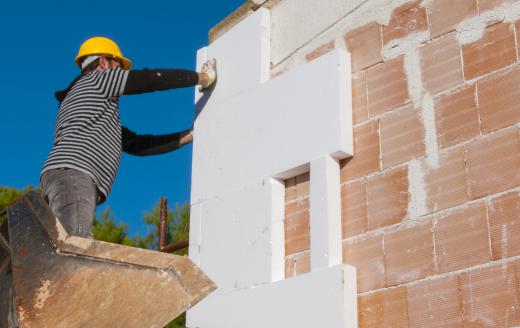Styrofoam™ is a brand name of the Dow Company and is used to make insulation, floral, and craft materials. Even though the word is a registered trademark, it is often used to refer to any expanded polystyrene foam used to make cups, packing materials, and other products. Styrofoam™ is commonly used as insulation in construction because of its unique properties. When used as insulation, it is cut into sheets or slabs and is commonly referred to as “blue board” in construction.
Styrofoam™ is light and waterproof and that makes it ideal as building insulation. Its closed cell structure means that Styrofoam™ insulation has a high R-value. R-value refers to the ability of a material to conduct heat. The higher the value a substance has, the more resistant it is to conducting heat.
Proper insulation does not allow heat to transfer into or out of a building and that reduces drafts and lowers heating and cooling costs. This means that a building will stay warm in the winter and cool in the summer.
Styrofoam™ insulation’s structure means that there is virtually no empty space between its cells. This means that the product is strong and waterproof. Since it is so resistant to water, mildew and mold are unable to grow on its surface.

Styrofoam™ insulation is cut into sheets which are then installed in the outside foundation walls or attached to the frame of the building. The foam can then be covered with different materials in order to create a certain look, such as stucco, stone, or marble. Light can degrade Styrofoam™ insulation. To counteract this problem, the foam should be installed with a light blocking material in order to protect it.

Styrofoam™ insulation is also used as floor insulation and roof insulation. On roofs, Styrofoam™ can be cut and used to provide appropriate drainage. It can also be installed in a log cabin. After it is laid on ceiling material, plywood or other materials can be placed over it. Shingles are then able to be installed over that.
One important factor that should be considered about Styrofoam™ is its effect on the environment. Styrofoam™ does not break down easily and can be ingested by animals and block their digestive tracts. However, Styrofoam™ is durable which means that it can be reused. Reusing Styrofoam™ insulation can cut the cost of future renovations and repairs.
